Welcome to the new addition of the Weekly Knight, where we dive into the latest ecosystem updates and exciting developments. Why is Binance taking so long to list KAS? And who is the second largest holder of KAS? We cover this and other news of the previous week.
Wolfie Explains the Deets on the XXIM Podcast
One of the most exciting videos to drop this week brought the hype: Wolfie, aka @Kaspa_hypeman, appeared on the XXIM Podcast in an in-depth interview hosted by Ankit.
The conversation kicked off with Wolfie's early crypto journey—mining Bitcoin on his computer after gaming sessions on World of Warcraft. He stopped mining when Bitcoin's price began rising, later selling 40 BTC at $4,000 each to cover rent. Realizing the potential of Bitcoin, he began searching for projects with more upside and became involved with the Verge coin community, eventually becoming a moderator.
Two weeks after Kaspa's mainnet launch, he stumbled upon it. Initially skeptical—it seemed too good to be true—he changed his mind when he learned that Kaspa's founder was cited in Ethereum's whitepaper. That convinced him it was legitimate. He began mining, joined the community, and quickly became a Telegram mod. He humorously recalled thinking that Mr. Solomon, who had accepted him into the mod team, was an older man, only to discover later that he was just a teenager.
Drawing on his background in small business, Wolfie took it upon himself to do unpaid outreach and business development for Kaspa. When exchanges started asking to speak with "C-level executives," he gave himself the title "Director of BD" to fit the role. "It's decentralized and fair-launch," he joked, "so anyone can call themselves Director of the Director of BD."
He went on to describe the sometimes clunky process of dealing with exchanges. When negotiating with MEXC, for example, they requested 50k USD worth of loaned KAS and USDT to start their order books. He noted that, ironically, some lower-tier exchanges request the highest listing fees—requests that the Kaspa community has rightly rejected. He also mentioned that top-tier exchanges can have opaque requirements, often involving NDAs. Kraken, however, was an exception—praised for their technical competence and professionalism.
Wolfie confirmed that Kaspa representatives have been in contact with Binance's listings team for years. "I thought we were going to be listed two Decembers ago," he said. Nicholas, from KASmedia, who has also been present in the Binance chats, can confirm the technical difficulty on Binance's part. Kaspa is so revolutionary and foreign to what Binance is accustomed to that it takes a while for them to fully integrate and audit the code and technology. For those who may not know, Binance is especially strict with its code and tech audits - more so than any exchange in the world, and this is primarily due to compliance issues. Thus, while the wait is longer than expected, the interest is definitely there.
Although there has been no formal confirmation, the internal chat remains active. "They've been hammering us with tech questions for the last six weeks," he added. "It's not a dead room. I think they're just waiting until it makes business sense."
As the conversation turned toward integration challenges, Wolfie pointed to the complexity of Kaspa as both a strength and a hurdle. "When you have a breakthrough Layer-1 that's very complex, and only five people in the world understand how it works—and you don't have a foundation wallet—exchanges are less inclined to integrate it."
Despite this, Kaspa's vibrant grassroots community has carried the project. "When Kraken announced their listing, it became their most-viewed tweet ever—1.3 million views. That shows the power of the community."
This lack of a centralized foundation has made Kaspa stand out from heavily funded competitors. "Look at coins like Solana or Sui—those are corporate products with VC backing, pre-mines, and huge marketing budgets. Kaspa didn't have any of that. It followed Bitcoin's fair-launch model exactly. No pre-mine. No foundation wallet. There were years where I had to pay for market-making and integrations personally."
That changed with the formation of the Kaspa Ecosystem Fund (KEF), backed by IceRiver, the top Kaspa ASIC manufacturer. KEF now funds infrastructure and ecosystem development that the network itself couldn't afford. "People criticize KEF, but they're not dumping coins—they're covering costs that help Kaspa grow. It's a huge step forward."
The interview shifted to Kaspa's ambitions for its stablecoin. Wolfie confirmed that he and KEF's Junny met with Circle in New York, and the Circle team was excited. He laid out a likely two-phase roadmap:
Bridged USDC via Kasplex's upcoming EVM, funded and maintained by KEF.
Native USDC, which may be introduced later once the Layer-2 infrastructure is operational.
"Stablecoin integration hinges on launching Layer-2, especially Kasplex's EVM," he said. "Circle and others need to do due diligence. KEF is likely handling those talks behind the scenes."
He added that native stablecoin issuance would only happen once Kaspa has robust DEXs and other DeFi activity. Until then, bridged stablecoins would be enough to offer cheaper, faster, and censorship-resistant transfers—at a fraction of a penny.
Wrapping up the interview, Wolfie was asked for a long-term price prediction for Kaspa by 2030.
"Nobody has a crystal ball—not Trump, not Saylor," he said. "But if Bitcoin is heading to a million dollars, and Kaspa captures even 1–2% of crypto's actual usage, I don't see why it couldn't reach a couple dollars—maybe 5 USD or more."

Mystery Kaspa Wallet #2
On June 23, 2025, @KaspaClass posted a detailed thread exploring one of the Kaspa network's most intriguing phenomena: Wallet #2—a massive, unlabeled address quietly accumulating hundreds of millions of KAS without ever selling.
As of June 28, Wallet #2 held roughly 800 million KAS. That alone is enough to spark speculation, but what's even more unusual is the behavior: steady accumulation, no selling, and complete silence. Not even a label. So, what's going on?
Some have guessed that this could be a large exchange—possibly Binance—preparing to list Kaspa. However, as @KaspaClass points out, exchanges typically don't accumulate this much KAS for a simple spot listing. They require reserves, yes, but not on this scale.
Instead, all signs point to something more strategic: a market maker. Market makers are the invisible forces that keep trading markets liquid and healthy. They fill order books, smooth out price spreads, stabilize volatility, and help launch tokens across multiple exchanges.
In January 2025, the Kaspa Ecosystem Foundation (KEF) officially appointed DWF Labs as its market maker. DWF Labs is one of the most active liquidity providers in the crypto space, operating across more than 60 exchanges, including Binance, OKX, Bybit, and Coinbase Futures. They specialize in providing liquidity for both spot markets and derivatives, and they are known for acquiring assets through over-the-counter (OTC) channels. This allows them to quietly accumulate without impacting the open market—exactly the kind of activity seen with Wallet #2.
Even more telling, Wallet #2 is accumulating exclusively from Bybit and Gate.io, both of which are known liquidity partners of DWF Labs. This behavior—gathering KAS through OTC deals and private APIs—is a classic market-maker move designed to avoid slippage, front-running, and unwanted price swings.
So what's the endgame? The liquidity of this scale doesn't appear by accident. It often signals upcoming market activity—whether that's new exchange listings, pair expansions, or ecosystem integrations. Binance already supports Kaspa mining pools and has node infrastructure in place. OKX has made appearances at Kaspa events, and Coinbase recently added KAS futures. The missing piece? Depth and liquidity—something Wallet #2 appears to be quietly building.
As @KaspaClass aptly put it, not all moves shout. Some just accumulate, work the backchannels, and build what's needed for the next step. Whether this is preparation for a major listing or a broader market shift, Wallet #2 is worth keeping an eye on.
Want to dive deeper into the clues? Check out the full thread from @KaspaClass here.
Exponential Kaspian Ecosystem Growth
The Kaspa ecosystem is rapidly evolving, with a vibrant wave of innovative projects and tools emerging that showcase the network's versatility and potential. From cutting-edge layer-2 infrastructure and decentralized finance platforms to privacy-focused messaging apps and Web3 operating systems, developers are building a diverse array of applications that push the boundaries of what Kaspa can do. It's an exciting time to watch this ecosystem grow, with new ideas and solutions shaping the future of decentralized technology every day. Inspired by Captain Sats, here's a curated overview of some of the most promising projects currently in development on Kaspa.
Infrastructure & Developer Tools
Igra Labs, @Igra_Labs – Kaspa-native Layer-2 infrastructure project, building an EVM-compatible programmability layer on Kaspa's BlockDAG.
Kasplex, @kasplex – Kaspa-native Layer-2 protocol, and scalability solution.
Kas OS, created by MMOStars – In-browser operating system integrating Kaspa tools, including Windows management, full file operations, apps, and Kaspa wallet.
Mixer, created by @brt2412 – Privacy-preserving transaction mixer.
Messaging and Identity
Kasia, @kasiamessaging – Secure, peer-to-peer messaging app featuring encrypted chats and integrated chess gameplay.
KNS Domains, @knsdomain – .Kas domain name services for Kaspa-based identities.
Kaspa Authentication, by @KASperiencexyz – Identity, authentication verification using the Kaspa chain. The team also created the Kaspa Seed PRotector Chrome extension to protect Kaspa seed phrases.
DeFi and Decentralized Exchanges
Kaspa Finance, @KaspaFinance (KFC) – DeFi is being built on Kaspa EVM via Kasplex.
Zealous Swap, @ZealousSwap (ZEAL) – AMM-based DEX on Kaspa.
Fervent Finance, @Fervent_Finance – Lending and borrowing protocol on Kaspa; part of the Zealous Swap ecosystem.
Moonbound.gg, @Moonboundgg – Fair-launch-only token launch platform; part of the Zealous Swap ecosystem.
KaspaCom, @KaspaCom – DeFi tools, including lending, farming, and decentralized exchanges, as well as a token launch.
Sea Swap, @SeaSwapXYZ – DEX aggregator to unify liquidity sources across Kaspa, on Igra Labs and Kasplex.
New Wallets & Payments
Kurncy, @kurncy_ – Secure wallet for all your Kaspa needs.
Kastle Wallet, @KastleWallet – Secure wallet for all your Kaspa needs.
Kasway POS, @kaswaypos – A decentralized point-of-sale system.
Bitcoin Lightning Layer, shared by Christian Ludwig – Lightning-style payment rails via Kaspa.
Gaming & Media
PPKAS, @PPKAS_space – Play-to-earn (P2E) gaming built on Kaspa, set in outer space.
Crumpet Media, @crumpet_media (CRUMBS) – A decentralized media and content platform.
Chess dApp, created by @starlightkas – Play chess on-chain via Kasia
Real-World Assets (RWA) & Enterprise Use
Kaspa Taxi, shared by KASperience – A decentralized ride-sharing application.
Kasino, shared by Y.Stan - a Sports betting platform featuring casino games such as blackjack, plinko, and horse racing.
Proof of Works (@ProofOfWorksKAS) – Decentralized hiring and payroll platform, like Fiverr, but with an on-chain reputation and trustless payments.
Kaspa Experience, @KaspaExperience – A Kaspa meet-up with vendors, workshops, panels, and more; Berlin, September 13, 2025.
This is just a taste of what is being built on the Kaspa network. Kaspa Kii is working on numerous real-world applications, including supply chain tracking, energy trading, insurance, and more. To read more about these initiatives, please see our article, A Clean Kaspian Future: Desert Energy, Clean Energy Trading, and Kaspa Kii.

Lending and Borrowing Coming to Kaspa
Zealous Swap continues to make headlines every week—and there’s no sign of them slowing down. This week, they introduced a major new initiative that expands Kaspa’s DeFi landscape.
Zealous Swap has officially announced Fervent Finance, the first lending and borrowing protocol built on the Kaspa ecosystem. This new platform enables users to lend and borrow assets securely, while rewarding ZEAL stakers with a share of the protocol’s revenue. To boost confidence and safety, all deposits are protected by the Zealous Swap Insurance Fund. Looking ahead, on-chain governance will be led by ZEAL holders and KAT NFT stakers from the Nacho the Kat community. Built by Zealous Swap and powered by Kaspa—Fervent Finance is here to ignite decentralized finance on KAS.
In addition to Fervent, Zealous Swap rolled out two powerful updates this week:
Flash Swaps are now live on the testnet, allowing users to borrow tokens with zero upfront capital—as long as they're returned within the same transaction. This feature introduces fast, secure, and fully native flash loan functionality to the Kaspa network, enabling advanced DeFi strategies.
The Insurance Fund (IF) is a safety mechanism that allocates 5% of monthly protocol revenue into a fund held as LP tokens, serving two strategic purposes: protecting users from unexpected security incidents and enhancing protocol liquidity. Over time, governance of the fund will shift to the community, with excess reserves potentially being redirected to Protocol-Owned Liquidity (POL), strengthening the platform's financial resilience.
While Zealous Swap is still operating in test mode, the pace of development and innovation points to a promising future for Kaspa DeFi. The team's continued delivery of advanced features, combined with their focus on user protection and decentralization, sets the stage for a powerful mainnet launch ahead.
Igra Labs Explains Deep Reorg
This week, Igra Labs shared a detailed update on their successful implementation and testing of "deep reorg" support—a key upgrade for their EVM compatibility layer on Kaspa. While reorgs typically refer to temporary chain reorganizations, in Igra's context, a "deep reorg" occurs when a finalized Kaspa block—already used to generate an "Igra block"—gets removed from the selected chain. Handling these events is crucial to ensure Reth (Ethereum's execution engine) stays in sync with Kaspa's consensus.
To bridge Kaspa and Ethereum, Igra uses a custom middleware called Viaduct, which batches Kaspa blocks into single, Ethereum-compatible "Igra blocks." These allow Reth to process smart contracts efficiently while reducing the load on other Igra nodes.
Previously, Igra sidestepped deep reorgs by waiting for extra confirmations, but this compromised Kaspa's core strength—speed and responsiveness. Now, Igra can dynamically roll back its internal state when necessary, preserving performance without sacrificing consistency.
Initial testing on private test networks has shown promising results, with nodes correctly recovering and converging even after deliberate reorgs dozens of blocks deep. Future testing will simulate longer, more complex reorg scenarios.
The Kaspa OS Web Browser
KasOS is a Web 3.0 browser-based operating system built on Kaspa, delivering a secure and performant desktop experience accessible from any modern browser—no installation needed. It currently supports Chrome (90+), Firefox (88+), Safari (14+), and Edge (90+), running smoothly across Windows, macOS, Linux, and mobile devices.
KasOS bridges traditional computing with blockchain by integrating Kaspa's wallet, transaction tools, and DApp support directly into the OS. Key features include multi-window management, virtual desktops, a full file system (up to 2GB storage), and built-in apps such as a code editor, text editor, file explorer, and secure chat. The OS is built using modern web technologies, including HTML5, WebGL, and client-side encryption, to ensure privacy and security.
Now live on GitHub, KasOS has been in development for several months, with a recent focus on integrating Kaspa-native apps, such as Kasia—a decentralized, encrypted messaging and chess platform. While KasOS doesn't replace your computer's primary operating system, it provides a powerful blockchain-native desktop environment that runs directly in your browser, enabling seamless Web3 integration and new possibilities for decentralized computing.
Goodbye Old Friend, Ledger to Phase Out Hardware Wallet
While Ledger has not natively supported KAS storage, many users have been able to store them using the KasVault application. Recently, Ledger announced that they will be phasing out support for the Ledger Nano S devices.
According to the official Ledger X account, "the hardware has reached the limits of what it can support." More specifically, it can no longer run "newer features and services like Clear Signing, Ledger Sync, or some of the latest applications available through Ledger Live."
Ledger clarified that although the Nano S can still be used, it is no longer under active development. This means it won't receive future firmware updates or app support. Users are advised to ensure their 24-word Secret Recovery Phrase is backed up and that their device powers on and functions normally.
Ledger's CTO, Charles Guillemet, reassured users that there's no need to move crypto if those conditions are met: the 24-word phrase remains the key to your assets.
They are offering a 20% discount for users looking to upgrade devices. If you're considering a new device, this could be a good time to explore your options. Be sure to check out our KASmedia Wallet Guide for Hot and Cold KAS Storage for more information on KAS storage alternatives.
Enjoyed reading this article?
More articles like thisComments
No comments yet!




